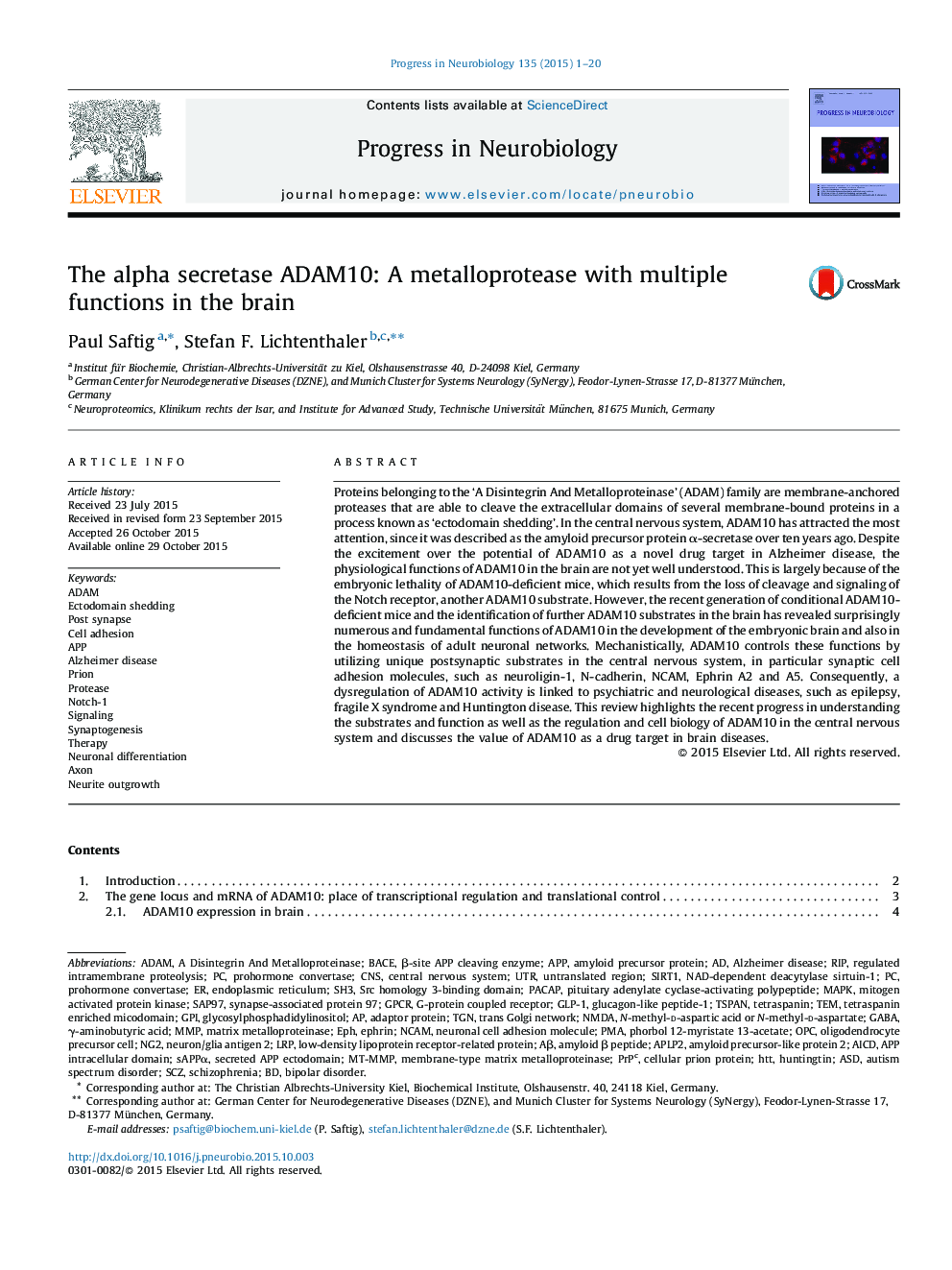| Article ID | Journal | Published Year | Pages | File Type |
|---|---|---|---|---|
| 4353271 | Progress in Neurobiology | 2015 | 20 Pages |
•ADAM10 is a central membrane-bound protease cleaving key neuronal proteins.•ADAM10 is an attractive therapeutic target in Alzheimer disease.•ADAM10 regulates central nervous system development and neuron/glia differentiation.•ADAM10 uses diverse neuronal substrates to regulate synaptogenesis and plasticity.•ADAM10 is linked to epilepsy, fragile X, prion, Huntington's, Alzheimer's disease.
Proteins belonging to the ‘A Disintegrin And Metalloproteinase’ (ADAM) family are membrane-anchored proteases that are able to cleave the extracellular domains of several membrane-bound proteins in a process known as ‘ectodomain shedding’. In the central nervous system, ADAM10 has attracted the most attention, since it was described as the amyloid precursor protein α-secretase over ten years ago. Despite the excitement over the potential of ADAM10 as a novel drug target in Alzheimer disease, the physiological functions of ADAM10 in the brain are not yet well understood. This is largely because of the embryonic lethality of ADAM10-deficient mice, which results from the loss of cleavage and signaling of the Notch receptor, another ADAM10 substrate. However, the recent generation of conditional ADAM10-deficient mice and the identification of further ADAM10 substrates in the brain has revealed surprisingly numerous and fundamental functions of ADAM10 in the development of the embryonic brain and also in the homeostasis of adult neuronal networks. Mechanistically, ADAM10 controls these functions by utilizing unique postsynaptic substrates in the central nervous system, in particular synaptic cell adhesion molecules, such as neuroligin-1, N-cadherin, NCAM, Ephrin A2 and A5. Consequently, a dysregulation of ADAM10 activity is linked to psychiatric and neurological diseases, such as epilepsy, fragile X syndrome and Huntington disease. This review highlights the recent progress in understanding the substrates and function as well as the regulation and cell biology of ADAM10 in the central nervous system and discusses the value of ADAM10 as a drug target in brain diseases.
Graphical abstractFigure optionsDownload full-size imageDownload high-quality image (145 K)Download as PowerPoint slide
